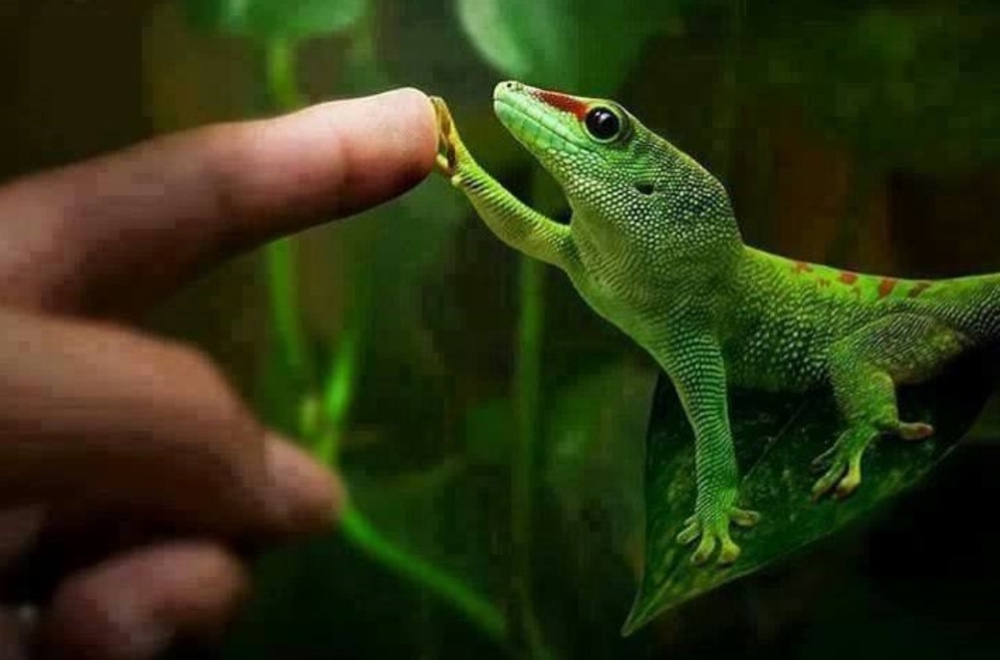Building Ropes
{10 minutes}
Building Ropes
The Foundation of Connection in San Culture
This is such a disarmingly simple and yet profound practice. It is at the heart, in many ways, of the deepest and simplest part of nature connection. As our advisor John Stokes says, "What we don't talk to, we don't understand. What we don't understand, we fear. What we fear, we destroy." The antidote then is to begin to talk to things. This communication doesn't happen solely through words. The moment we go out into nature and we actually recognize a creature as an individual–Not as a species (though that helps)–not a banded gecko, but as an individual. This lizard. In this moment of recognition, which the San people say is reciprocal, they explain that a tiny energetic thread forms between us and the animal. Each time we recognize the animal, this gets a little bit thicker until it becomes a cord, and finally a rope. The San say that they make ropes with all of the Creation. That this is what it means to be a bushman.
How is this different than when Lee Mun Wah teaches us that relational mindfulness is like falling in love? He says that then, we notice everything. If we go out into the living world like this. Not to recreate, not to take something, but just to be, as Ilarion Merculieff reminds us. To be still, to notice, to listen, to be attuned, to be in relationship. We can't help it really. We notice something, we become enchanted by it, and we pay attention. Children can't help doing this. We find them face down in the dirt watching a trail of ants. Down at the creek with the crayfish. Chasing a lizard. We are hard-wired for this. If we notice, what we are noticing notices us, and BOOM- a thread.
I like to name creatures once there's a thread between us. Once I recognize them. Or better– to let them tell me their names. It sounds somehow corny, or new-age, but the San culture is the oldest continuous culture in the world. It has more than one hundred thousand years of knowing its own history. I recognize someone better if they have a name. It enlivens them for me, helps me know them in their individuality. Once there is a name, it opens the door to deepening. Now we can talk to someone.
Why limit ourselves to animals? What about plants? Most indigenous cultures, when asked about their ethnobotanical knowledge say that the plants told them. Is this not possible? What is it that is constricted within us that prevents us from building a rope with a plant? If you have a garden, if you've cared for a plant, you know that it talks to you. It droops when it needs water. It lets you know if it is getting too much Sun. You can tell when it is happy, when it isn't. You learn to recognize it, to know what it needs. How is it different than this? What would it mean to listen, this attentively, to all of the living world? This is, in fact, what earth-based people have being doing since the dawn of time.
Why limit ourselves to the animals and plants? Have you not heard that the Lakota people call the hot rocks in a sweat lodge stone people? That they confer the respect upon them that they confer upon a grandfather. And why not? Those rocks have been here, some of them, for hundreds of millions of years. They are vessels of deep time. Why not extend animacy to all things? Do the scriptures not say that God is in everything? You don't need to be a believer to know this. You only need to be awake to reality. Quantum Theory tells us the same thing. Even that which appears as totally solid is filled with energy buzzing like bees. At the heart of matter is emptiness and force. To work with these energies, be they in the body through Chi Gong, or in the earth through Feng Shui- to harmonize with them: this is a doorway to connection. And what about the celestial forces? In Anishanabeg, the word for moon is Grandmother Moon. Evidence of a rope; a relationship. In a way, building ropes is THE DOORWAY.
Related Practices:
This practice is at the heart of connection phenomenology, and the taproot of Connecting to Nature. Related to everything in Connecting to Nature, and perhaps everything in Connecting to Others. This practice is excerpted from our film The Original Language (Or How to Talk to Everything). That film connects to a series of films we created with Tiokasin Ghosthorse, beginning with The Language of Transformation: The Etymology of Who We Are, and culminating in our four part series that begins with Deprogramming the Colonial Mind. With respect to exploring relationships with others, see our film Relational Mindfulness. See Build Multi-Cultural Communities. See Becoming a Real Human Being with Ilarion Merculieff. Related to our broader conversation about Ancestral Technologies of Wellbeing and The Art and Science of Connection. In the realm of practice, see Befriend a Tree, Bird Language, Dream Tracking, Every Head is a World, Fanning the Fires of Community, Fire as Teacher, Forest Bathing, Get to Know Your Local Flora and Fauna, Healing Separation, Interbeing, Meditate in Nature, Mitákuye Oyás’iŋ, Reflective Listening, Slow Down, Tracking and the Arts of Life, Tracking Basics: Developing Intuition, Ways of Knowing Intuitively (Refining Intuition), Weaving Living Networks.Photography: Stein Egil Liland | Licensed from Pexels.com, used with permission.


